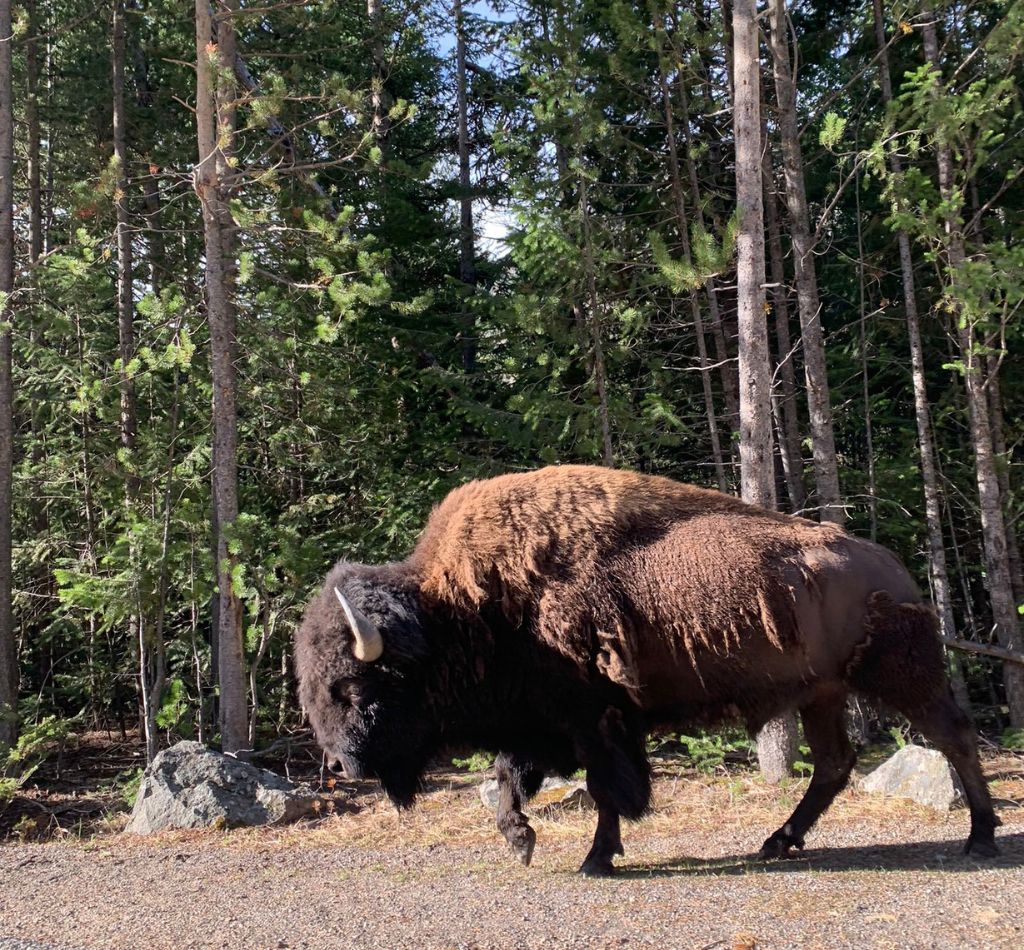
Discover the Magic of Yellowstone National Park
A Comprehensive Travel Guide
This comprehensive guide will take you through everything you need to know about touring Yellowstone, from what to see and do to where to stay and how to stay safe.
If you’re interested in wildlife encounters, be sure to check out this guide to unforgettable Yellowstone wildlife encounters. From grizzly bears and wolves to bison and elk, Yellowstone is home to a stunning array of wildlife that’s sure to leave you in awe.
My personal experience visiting Yellowstone was nothing short of magical. From the moment I stepped foot into the park, I was in awe of its natural beauty, and the feeling of being surrounded by nature was genuinely exhilarating. I was blown away by the geysers, hot springs, and mud pots that dotted the landscape, and the chance to see wildlife in its natural habitat was a highlight of my trip.
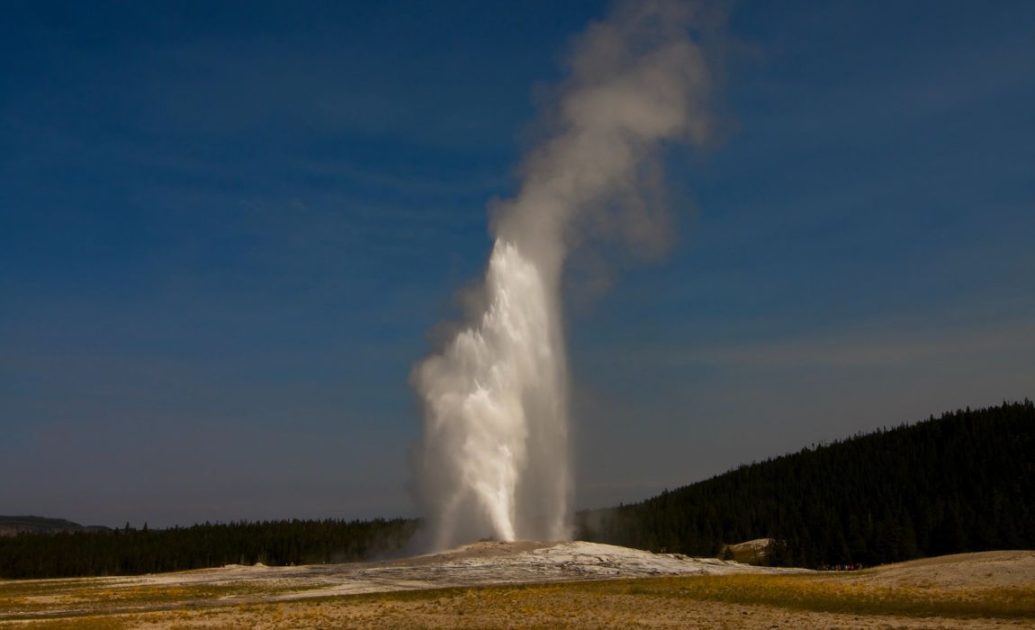
My Yellowstone vacation was one of the best trips I’ve ever taken, and I’m eager to share my tips and recommendations with you in this travel guide. Whether you’re looking for a peaceful getaway or an action-packed adventure, Yellowstone National Park is the perfect destination. So pack your bags, grab your camera, and let’s get ready for a Yellowstone trip to remember!
Everything you need to Know About Yellowstone
Brief Overview of Yellowstone National Park
Yellowstone National Park is one of the world’s most iconic and stunning natural wonders. With a history dating back to 1872, it was the first national park to be established worldwide and has since been designated a UNESCO World Heritage Site. The park spans 2.2 million acres of breathtaking landscapes, ranging from rolling hills and forests to geysers, hot springs, and mud pots. It is located primarily in the state of Wyoming, with small parts extending into Montana and Idaho, making it accessible to a wide range of travelers.
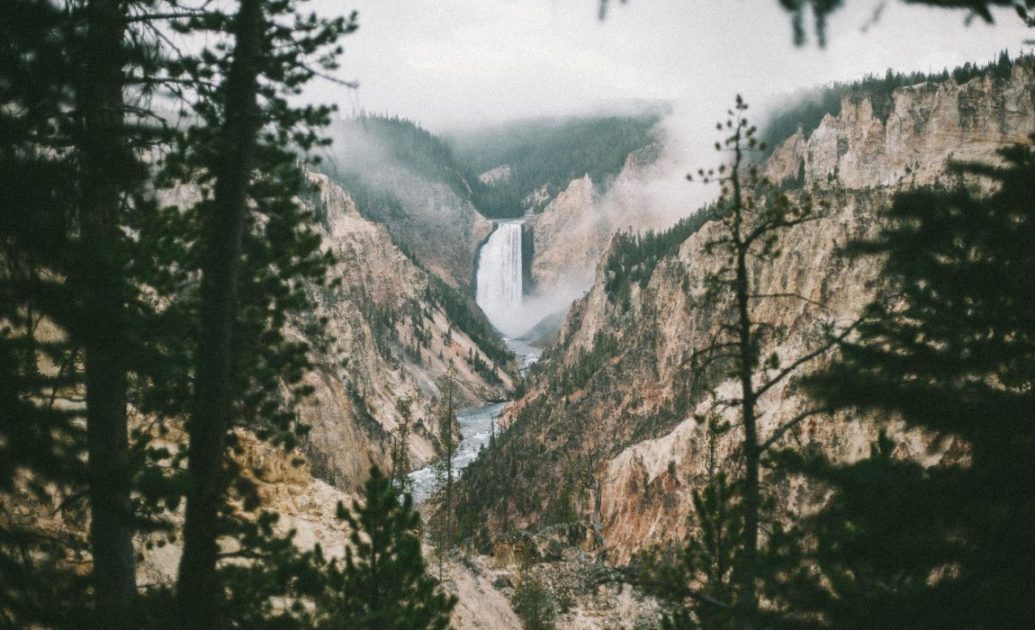
Yellowstone is also home to an impressive variety of wildlife, including grizzly bears, wolves, bison, and elk. Whether you’re an experienced hiker, wildlife enthusiast, or just looking to escape the hustle and bustle of city life, Yellowstone National Park is the perfect destination. With its breathtaking scenery, diverse wildlife, and geological wonders, it’s no wonder why millions of visitors flock to the park every year.
Importance of Planning a Trip to Yellowstone
Yellowstone National Park is a hugely popular destination, attracting millions of visitors annually. With so many people traveling to the park, planning your trip well in advance is essential. There are many factors to consider when planning a trip to Yellowstone, including the best time to visit, transportation, accommodations, and things to do.
The park’s popularity also means that during peak season, the park can get crowded, so it’s essential to plan your trip carefully to avoid long wait times and overcrowded attractions. Choosing the right time to visit is crucial, as the park’s weather and accessibility can vary greatly depending on the season. From finding suitable accommodations, such as lodges, cabins, or campgrounds, to deciding which attractions to visit, such as Old Faithful, Grand Canyon of Yellowstone, and Yellowstone Lake, there is much to consider when planning a trip to Yellowstone National Park.
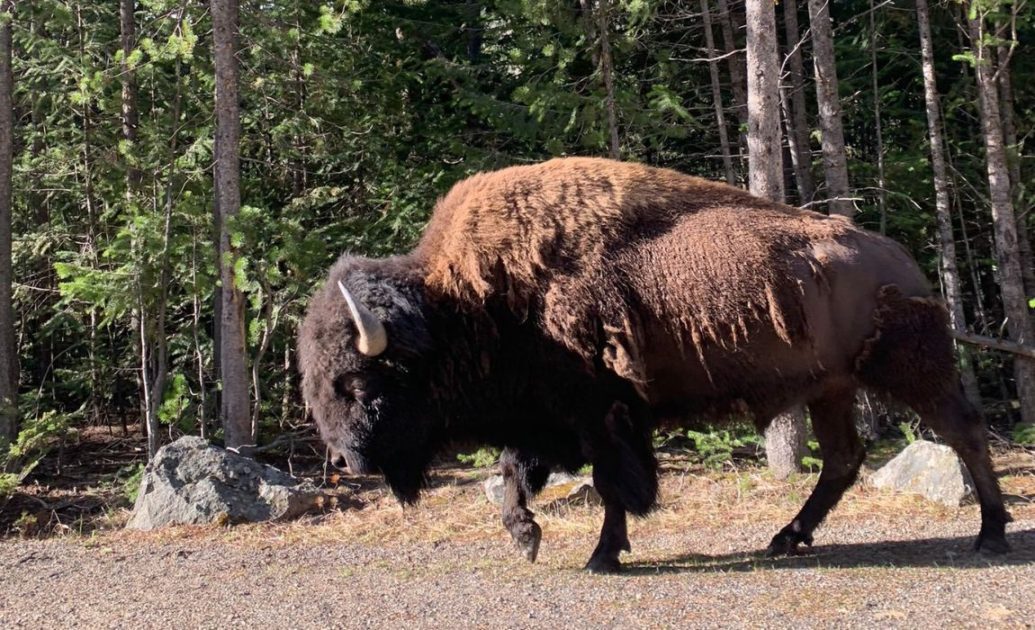
By taking the time to plan your trip in advance, you can ensure that your visit to Yellowstone National Park is a smooth, enjoyable, and memorable experience. With the proper planning and preparation, your Yellowstone vacation will be a trip of a lifetime.
Planning Your Trip To Yellowstone National Park
When to Visit Yellowstone
The best time to visit Yellowstone depends on your preferences and the activities you want to enjoy.
Summer is the most popular time to visit, with warm weather and longer daylight hours making it ideal for outdoor activities like hiking and wildlife watching. Winter is also a great time to visit, with snow-covered landscapes and the chance to see wildlife in their natural habitats. Spring and fall are also popular, offering mild weather and colorful landscapes.
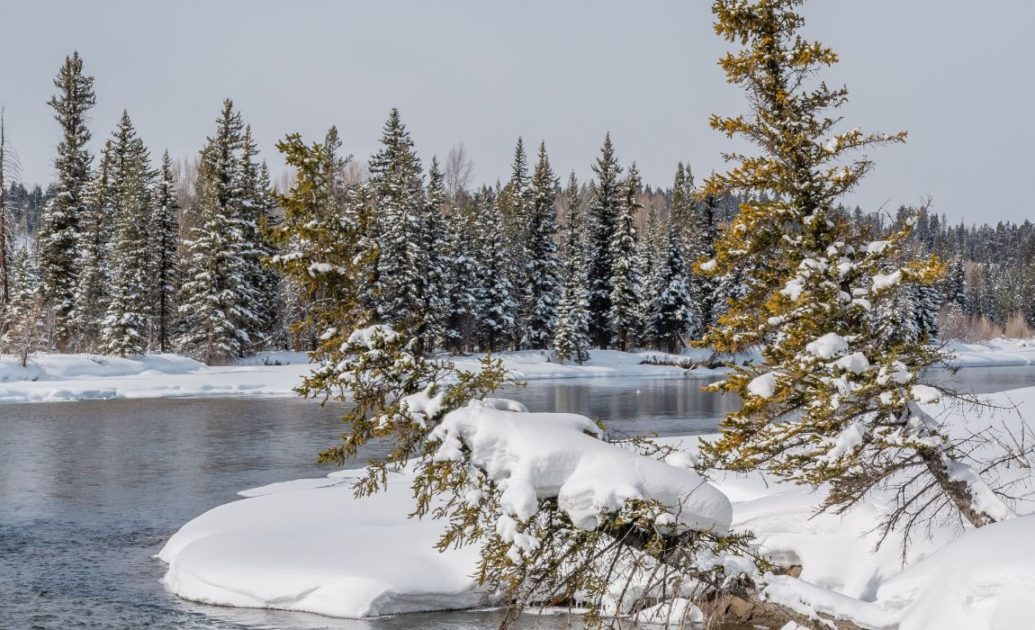
I personally visited Yellowstone in the spring, and it was a wonderful experience. The mild weather allowed for comfortable outdoor activities, and the landscape was breathtaking. The snow was starting to melt, and the streams and waterfalls were gushing with new life. The trees and flowers began blooming, adding a pop of color to the park’s already breathtaking landscapes.
The crowds are smaller in spring than in the summer, making it a great time to explore Yellowstone’s many attractions and destinations. Whether you want to take a scenic drive, go for a hike, or observe wildlife, spring is a fantastic time to visit Yellowstone National Park.
Getting to Yellowstone
Getting to Yellowstone is relatively easy, with several options available to visitors. The park is just a few hours’ drive from several major cities, including Bozeman, Montana, and Jackson, Wyoming.
If you prefer to fly, the nearest airports are Bozeman Yellowstone International Airport and Jackson Hole Airport. From there, you can rent a car or take a shuttle to the park. However, taking a car is often the preferred mode of transportation for many visitors as it provides more flexibility and the opportunity to explore the park at your own pace.
With a car, you can easily navigate to all of the major attractions and scenic viewpoints, making it the ideal choice for those who want to fully immerse themselves in the natural beauty of Yellowstone. Whether you’re traveling solo or with a group, driving to Yellowstone is a great way to experience all the park has to offer.
Accommodation Options in Yellowstone National Park
Yellowstone National Park is one of the most popular destinations in the United States, drawing millions of visitors each year. Whether planning a quick day trip or an extended stay, choosing suitable accommodation is essential for a memorable and comfortable journey.
Camping
Camping is one of the most popular ways to stay in Yellowstone National Park. The park offers 12 campgrounds, with a total of over 2,000 sites, including both reservable and first-come, first-served options. The campsites are located throughout the park and provide a range of amenities, including picnic tables, fire pits, and access to restrooms and showers. Some sites also have electric and water hookups for RVs. Prices range from $15 to $31 per night, making camping a budget-friendly option for travelers.
Lodges
Lodges Yellowstone National Park is home to nine lodges, each with its own unique character and amenities. The lodges range from historic buildings, such as the Old Faithful Inn, to modern facilities, like the Canyon Lodge and Cabins. Many lodges offer dining options, guided tours, and outdoor activities; some even have swimming pools and hot tubs. Prices for lodges vary depending on the level of luxury and the time of year but can be on the higher side, with rooms starting at around $150 per night.
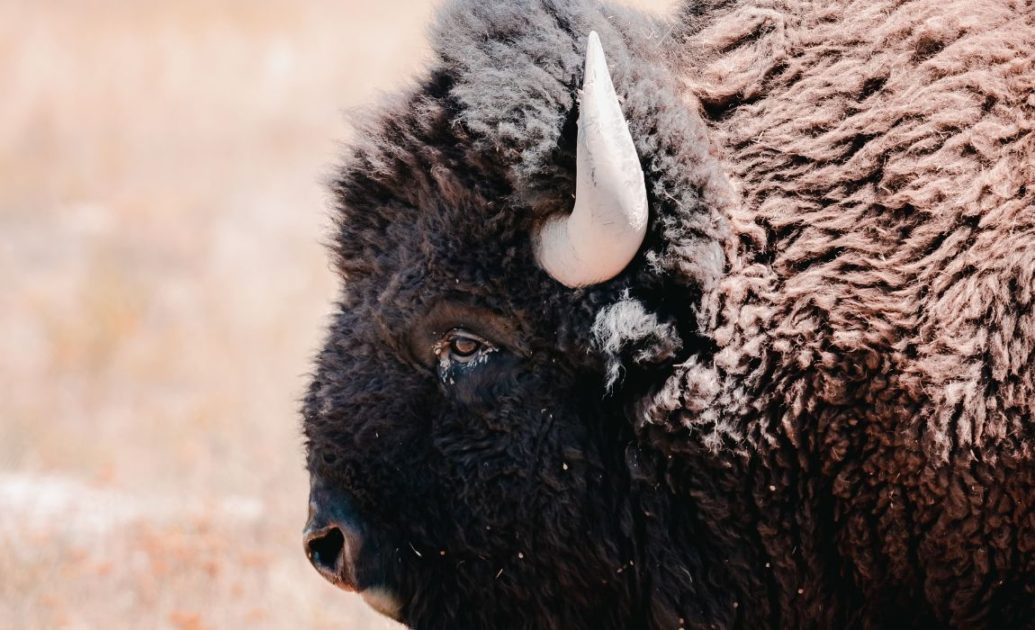
Cabins and Vacation Rentals
Cabins and Vacation Rentals for travelers looking for more space and privacy, cabins and vacation rentals are a great option. Yellowstone National Park offers several cabin options, ranging from rustic to modern, accommodating groups of various sizes. Additionally, many privately owned vacation rentals are available in nearby communities such as West Yellowstone, Gardiner, and Cooke City. These vacation rentals offer various options, from cozy cabins to larger homes with more amenities. Prices vary depending on the size, location, and time of year but can be more budget-friendly than lodges.
Backcountry Camping
Backcountry Camping for the adventurous traveler, backcountry camping is an option in Yellowstone National Park. Permits are required, and campsites are limited to designated areas. Backcountry camping requires more preparation and planning than traditional camping, but it offers a unique opportunity to experience the wilderness of Yellowstone away from the crowds.
In conclusion, many accommodation options are available in Yellowstone National Park, ranging from budget-friendly camping to luxury lodges. Each option has unique advantages, and choosing the right one depends on your budget, travel style, and personal preferences. By understanding the available options, you can make the best decision for your trip to Yellowstone and create memories that will last a lifetime.
What to pack for Yellowstone
Yellowstone National Park is a stunning destination for outdoor enthusiasts and nature lovers. The park is known for its geothermal features, wildlife, and breathtaking scenery. If you’re planning a trip to Yellowstone, it’s important to pack appropriately so you can make the most of your experience. Here are some essential items to consider when packing for Yellowstone National Park.
Clothing
Yellowstone’s weather can be unpredictable, so it’s important to pack layers. Make sure you have comfortable and warm clothing for chilly nights and cool mornings. During the day, you may need to shed layers as it can get quite warm. Also, pack sturdy, comfortable shoes for hiking and exploring.
Backpack
A backpack is essential for carrying your water, snacks, camera, maps, and other essentials. Ensure your backpack is comfortable and large enough to carry all necessary items.
Water bottle
Staying hydrated is crucial, especially when exploring the park. Bring a refillable water bottle, and make sure to fill it up regularly.
Maps and guidebooks
Yellowstone National Park is vast and offers many attractions. You’ll want to have maps and guidebooks to help you navigate the park and plan your activities.
Camera
Yellowstone is a photographer’s paradise, with numerous photo opportunities around every corner. Make sure to bring your camera and extra batteries or a charger.
Binoculars
If you’re interested in wildlife viewing, bring a pair of binoculars to help you spot animals from a distance.
Sun protection
Yellowstone can get quite sunny, so be sure to pack sunscreen, sunglasses, and a hat to protect your skin and eyes.
Insect repellent
Insects, especially mosquitoes, can be a nuisance in Yellowstone during the summer months. Bring insect repellent to avoid getting bitten.
First-aid kit
Accidents happen, so it’s a good idea to bring a basic first-aid kit. Make sure it includes essentials like bandages, pain relievers, and any medications you may need.
Snacks
Yellowstone offers limited dining options, and it’s a good idea to bring some snacks with you to munch on during hikes or while exploring the park.
Must-See Attractions in Yellowstone
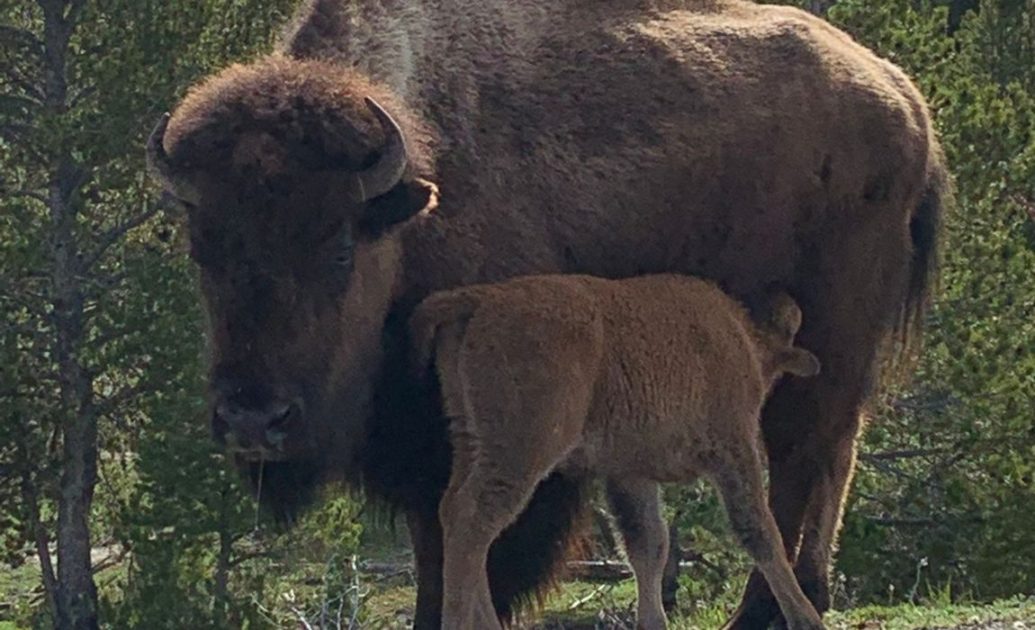
Yellowstone National Park is a vast expanse of wilderness located primarily in the state of Wyoming but also stretching into Montana and Idaho. It is home to diverse wildlife, stunning landscapes, and geological wonders. With so much to see and explore, it can be challenging to know where to start. To help you plan your trip, here are some must-see attractions in Yellowstone National Park.
Old Faithful – A Timeless Wonder in Yellowstone National Park
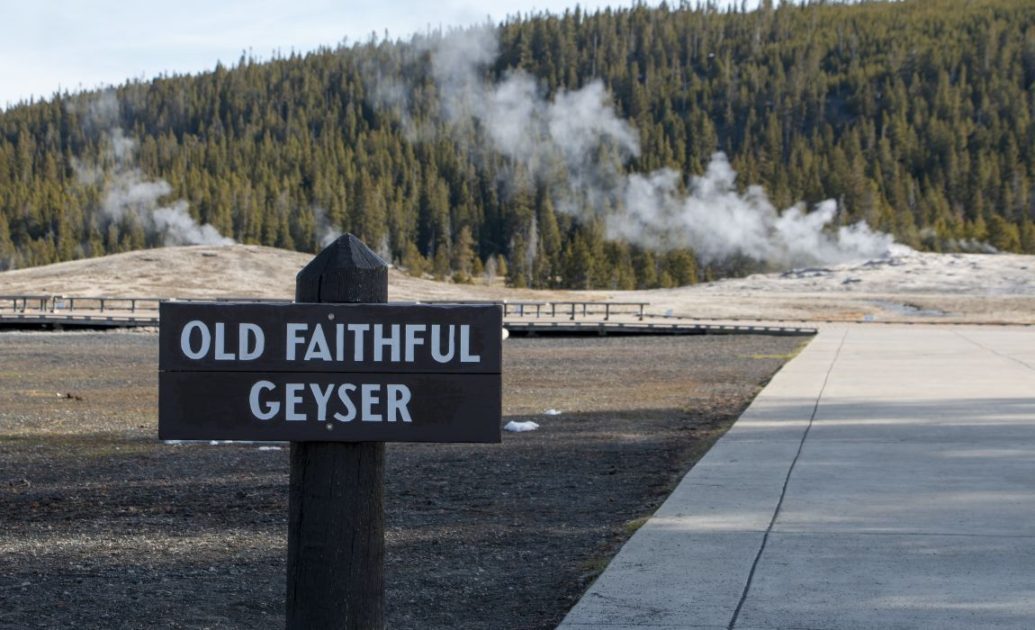
Yellowstone National Park is home to many natural wonders, but none are as iconic as Old Faithful. This famous geyser has been drawing visitors to Yellowstone for over a century and is one of the park’s most popular attractions. Old Faithful is a must-see stop on your Yellowstone tour, whether you’re a seasoned traveler or a first-time visitor.
The History of Old Faithful
Old Faithful got its name from the fact that it has been erupting with remarkable consistency for hundreds of years. The first recorded eruption occurred in 1870, and since then, it has erupted approximately every 90 minutes. This regularity has made Old Faithful one of the most studied geysers in the world and a symbol of the geological wonders found in Yellowstone National Park.
What to Expect at Old Faithful
Visiting Old Faithful is an unforgettable experience. The geyser erupts with a powerful burst of steam and water that can reach heights of up to 185 feet. The eruption lasts anywhere from 1 to 5 minutes, and during that time, you’ll be able to hear the roar of the steam and feel the heat on your face.
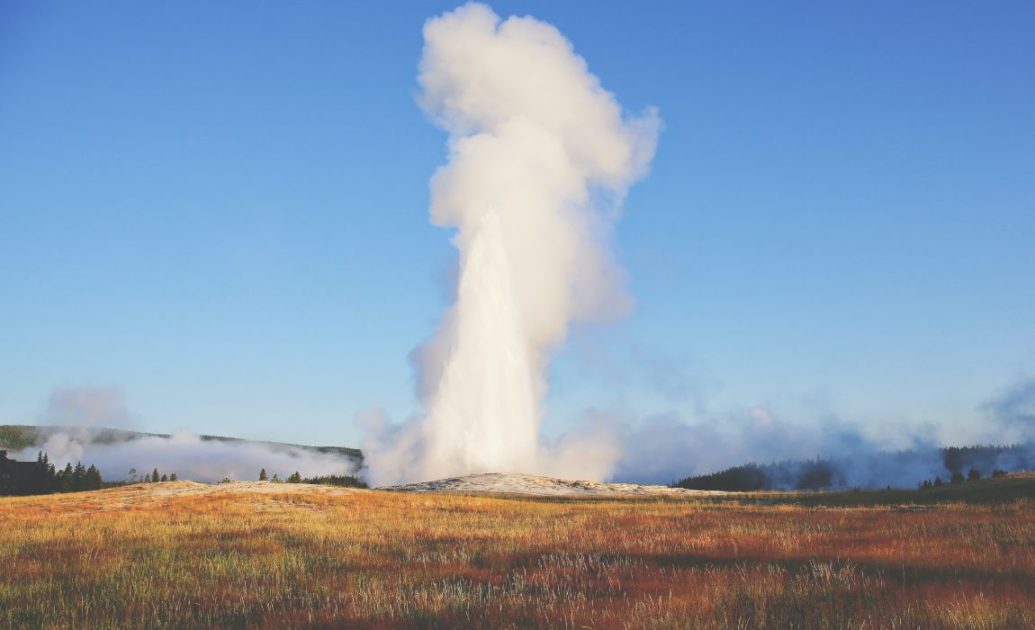
The best way to experience Old Faithful is to plan your visit around one of its eruptions. The estimated eruption times are posted at the Old Faithful Visitor Education Center or on the park’s website. From there, it’s a short walk to the viewing area, where you can watch the eruption from a safe distance.
Planning Your Visit
If you’re planning a trip to Yellowstone National Park, be sure to include a visit to Old Faithful on your itinerary. It’s one of the park’s most accessible attractions, just a few minutes from the Old Faithful Visitor Education Center.
In addition to visiting Old Faithful, there are many other things to do and see in the area. You can take a leisurely walk along the boardwalk surrounding the geyser, visit the nearby gift shop and museum, or enjoy a picnic lunch in the nearby meadow.
When to Visit Old Faithful
The best time to visit Old Faithful is during the summer when the weather is warm and the park is at its busiest. However, it’s a popular attraction year-round, and you can expect to see large crowds no matter when you visit. To avoid crowds and get the best view, try to arrive a few minutes before the estimated eruption time.
Old Faithful is a must-see stop on your Yellowstone tour, whether you’re a seasoned traveler or a first-time visitor. With its stunning natural beauty and timeless wonder, it’s a true American icon and a symbol of the incredible diversity of life on our planet.
Grand Prismatic Spring – A Colorful Gem in Yellowstone National Park
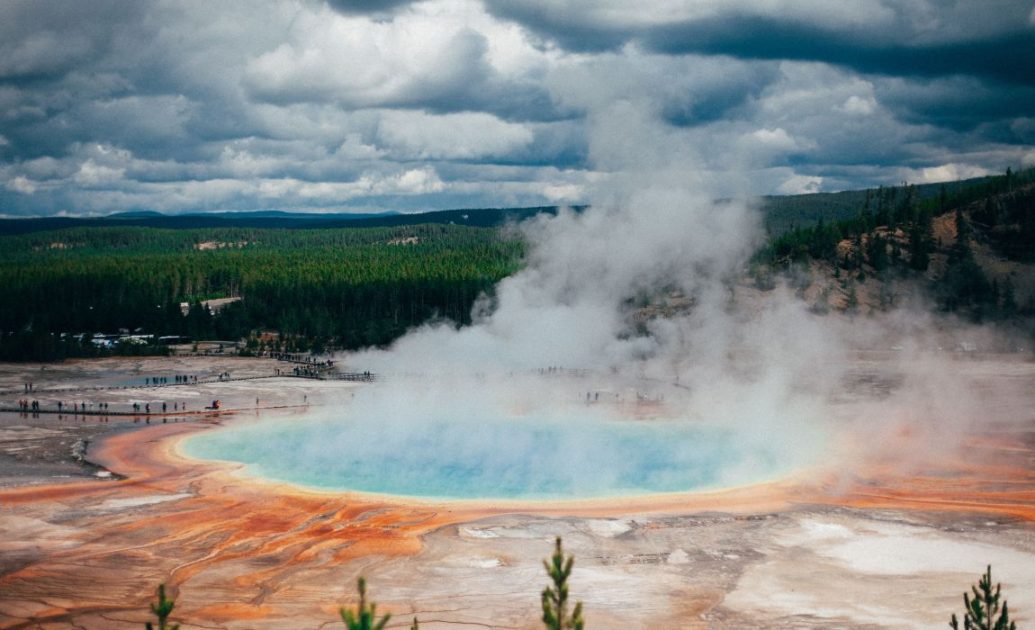
One of the most breathtaking sights in the park is the Grand Prismatic Spring, a colorful gem located in the Midway Geyser Basin. This vibrant spring is not only one of the largest hot springs in the world but also one of the most colorful, making it a must-visit destination for anyone traveling to Yellowstone.
What to Expect at the Grand Prismatic Spring
The Grand Prismatic Spring is a massive hot spring with a diameter of 370 feet and a depth of 121 feet. The water in the spring is heated by geothermal energy, which causes it to rise to the surface and create a steam plume. This steam plume, combined with the mineral-rich water, creates the vibrant colors that make the Grand Prismatic Spring so unique. The spring is surrounded by a vibrant rainbow of colors, ranging from deep blue to bright yellow, giving it a mesmerizing appearance.
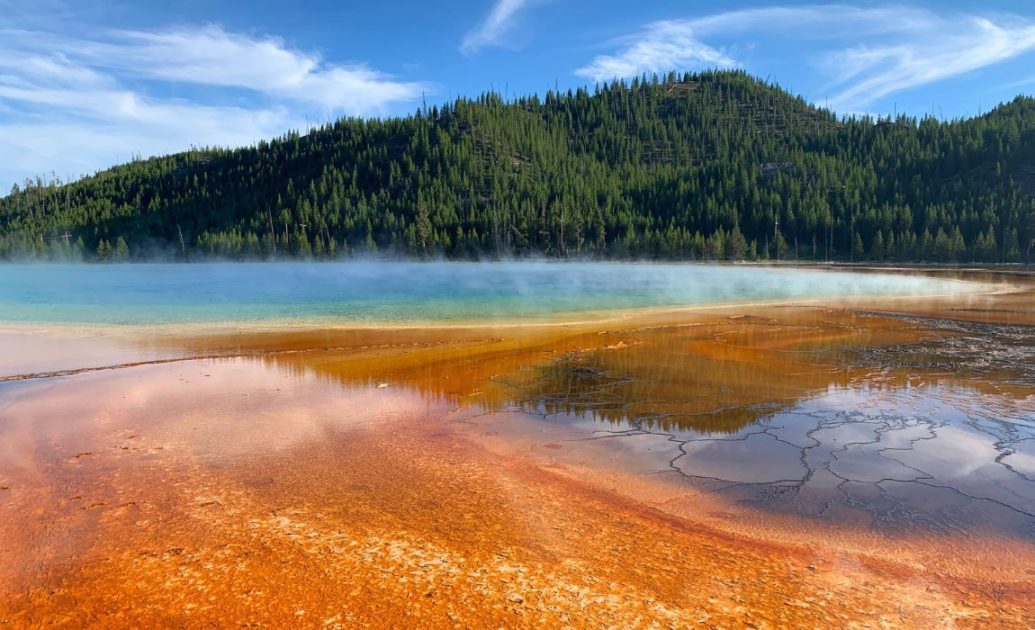
The colors of the Grand Prismatic Spring are created by a variety of bacteria that thrive in warm, mineral-rich waters. These bacteria, called thermophilic bacteria, are found in the spring’s peripheral area and create a vibrant rainbow of colors. The water temperature in the center of the spring is too hot for these bacteria to survive, which is why the water in the center is a deep blue color.
Planning Your Visit
Visiting the Grand Prismatic Spring is a must-do activity for anyone traveling to Yellowstone National Park. The spring is easily accessible, with a boardwalk trail that takes visitors right up to the edge of the spring. From the boardwalk, visitors can admire the spring’s vibrant colors and take in the stunning scenery of the surrounding area. The best time to visit the Grand Prismatic Spring is during the summer months when the weather is warm, and the steam plume is at its fullest.
Yellowstone Lake – A Natural Wonder in the Heart of Yellowstone National Park
Yellowstone National Park is home to a wealth of natural wonders, from bubbling geysers and steaming hot springs to pristine lakes and rushing rivers. One of the most striking of these wonders is Yellowstone Lake, a vast body of crystal-clear water that sits at an elevation of 7,732 feet. The lake is a source of beauty and ecological significance, providing a habitat for a range of fish and wildlife species.
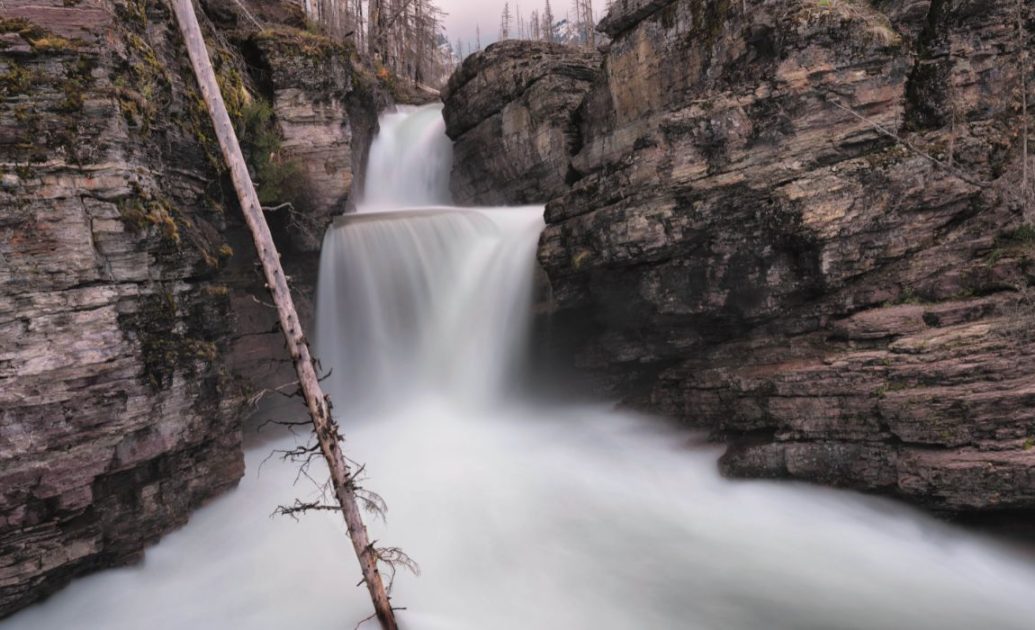
Geological Significance of Yellowstone Lake
Yellowstone Lake is one of the largest high-altitude lakes in North America, with a surface area of 136 square miles. The lake is situated in a volcanic caldera and is fed by several rivers and streams. The geothermal activity in the park is reflected in the lake’s warm waters, which never freeze over, even during the coldest winter months.
Wildlife at Yellowstone Lake
Yellowstone Lake is a haven for wildlife, with various fish species living in its waters, including cutthroat trout, lake trout, and Arctic grayling. The lake is also an important stopover for migratory birds, with several species of waterfowl and shorebirds visiting each year. Visitors to the park can often spot bald eagles, ospreys, and pelicans soaring overhead or perched on the shoreline.

Recreational Activities at Yellowstone Lake
Visitors to Yellowstone Lake can enjoy a range of recreational activities, from fishing and boating to hiking and wildlife watching. The lake is surrounded by a network of trails, including the famous Lake Shore Trail, which offers stunning water views and the surrounding landscape. Visitors can also rent boats, kayaks, and canoes to explore the lake’s shoreline and inlets.
Visiting Yellowstone Lake
Yellowstone Lake is one of the most accessible parts of the park, with several roads and trails leading to the shoreline. Visitors can park their cars at one of the many pullouts and picnic areas and take a stroll along the shore. Alternatively, they can take a guided tour or a boat excursion to experience the lake’s beauty and wildlife.
Grand Canyon of the Yellowstone – A Natural Wonder in Yellowstone National Park
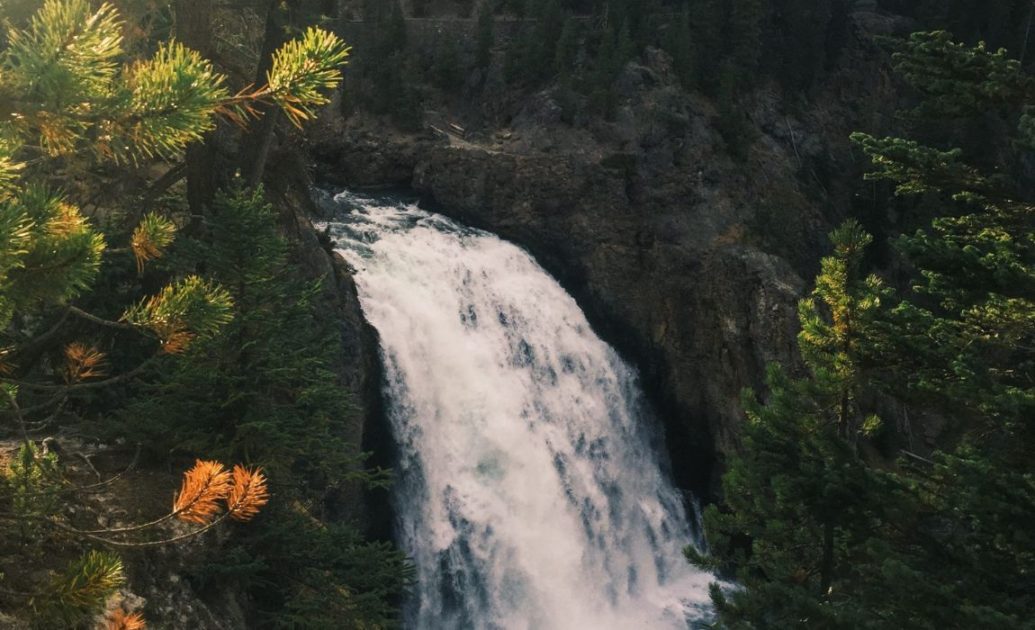
One of the most awe-inspiring sights in the park is the Grand Canyon of Yellowstone, a massive and rugged canyon carved over thousands of years by the Yellowstone River. This natural wonder is a must-see for anyone visiting the park and offers a glimpse into the immense geological forces that have shaped the region over time.
The Grand Canyon of Yellowstone is located in the northern part of the park and stretches for over 20 miles. It reaches depths of over 1,000 feet and is known for its unique geological formations, including towering cliffs, vibrant colors, and numerous hot springs. The colors of the canyon walls are exceptionally breathtaking, ranging from shades of orange and yellow to deep reds and blues, creating a truly spectacular sight.
The most popular viewing spot for the Grand Canyon of Yellowstone is the South Rim Drive, where visitors can get a panoramic view of the canyon and its surroundings. Here, you’ll find several scenic overlooks, including Artist Point, which offers one of the best views of the canyon. Another popular spot is the Upper Falls, the tallest waterfall in the park, with a drop of over 300 feet.
Visitors to the Grand Canyon of Yellowstone have several options for exploring the area. Several trails lead down into the canyon, providing a closer look at the geological formations and hot springs. Hiking these trails can be challenging, but the views from the bottom are well worth the effort. For those who prefer to stay on top of the canyon, several scenic drives and bike trails offer stunning views of the area.
Lamar Valley – A Hidden Gem in Yellowstone National Park
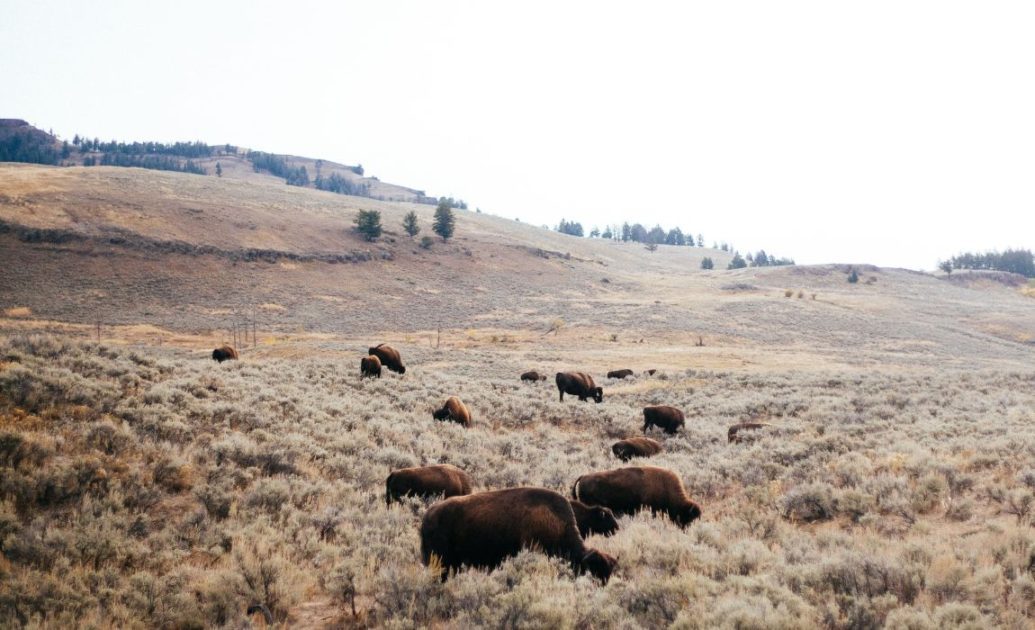
Nestled in the northeast corner of Yellowstone National Park, Lamar Valley is a breathtakingly beautiful region often referred to as the “American Serengeti.” The valley is a haven for wildlife, including gray wolves, coyotes, bison, and elk. It is a popular destination for those seeking a chance to view these magnificent creatures in their natural habitats. The valley is also home to the Lamar River, which winds its way through the heart of the valley, providing a serene and peaceful atmosphere.
Lamar Valley is an absolute must-visit for those who love the great outdoors. With miles of hiking trails and backcountry camping opportunities, there is plenty to explore and discover. Whether a seasoned hiker or a beginner, you’ll find trails that suit your skill level and preferences. The valley is also famous for its scenic drives, with several roads winding their way through it, providing breathtaking views and plenty of opportunities for wildlife viewing.
If you’re an avid wildlife photographer, Lamar Valley is the perfect destination for you. The valley provides ample opportunities for capturing stunning images of the animals that call it home. From wolves and coyotes to bison and elk, you’ll have the chance to photograph a wide range of wildlife in their natural habitats. Lamar Valley is a photographer’s paradise if you prefer to capture images using a traditional camera or a smartphone.
One of the best things about Lamar Valley is that it is less crowded than other parts of Yellowstone National Park. This means that you can enjoy the peace and quiet of the valley without being surrounded by crowds of people. Lamar Valley has something to offer everyone, whether you’re looking for a peaceful escape or a thrilling adventure.
Mammoth Hot Springs – A Unique and Majestic Natural Wonder in Yellowstone National Park
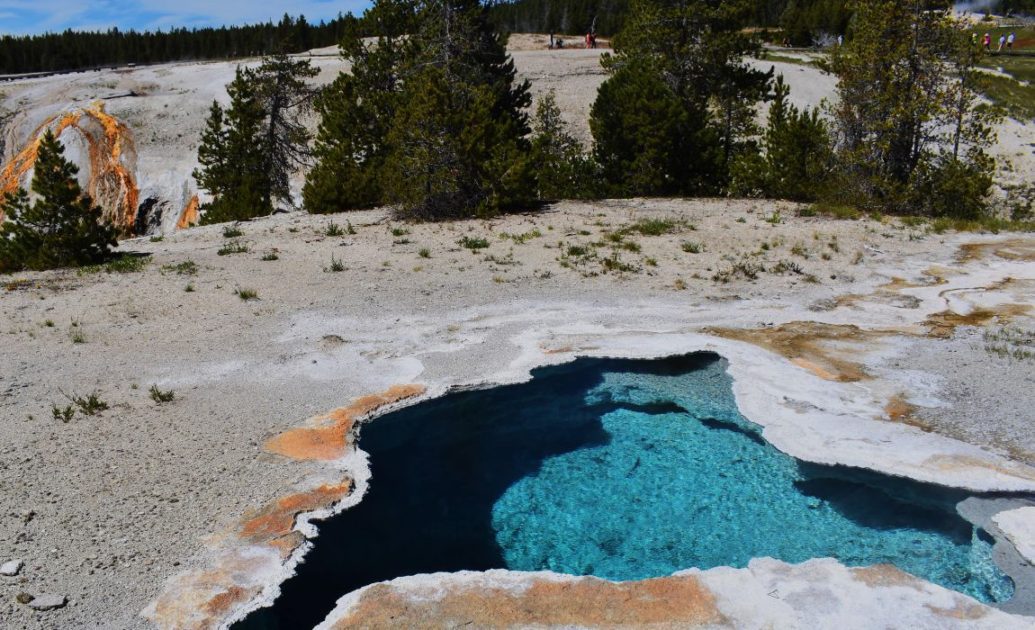
Yellowstone National Park is home to an array of breathtaking geological wonders, and the Mammoth Hot Springs is undoubtedly one of the most captivating. This unique formation of hot springs, terraces, and travertine pools is a must-visit destination for anyone exploring the park. In this article, we’ll take a closer look at the Mammoth Hot Springs and why they are so special.
Geological Formation of the Mammoth Hot Springs
The Mammoth Hot Springs are formed by the interaction of hot water and minerals as they flow to the surface. As the hot water rises, it meets the cooler air and cools. The minerals in the water then precipitate out of the solution, forming the terraces and pools that we see today.
The travertine terraces are made of calcium carbonate, which builds up over time, creating the layered, white terraces that are so distinctive. The vibrant colors of the hot springs are due to a variety of bacteria living in the water, with each species producing a different color.
Visiting the Mammoth Hot Springs
Visiting the Mammoth Hot Springs is a must-do activity for anyone visiting Yellowstone National Park. The hot springs are located near the park’s north entrance, making them easily accessible to visitors. The area is home to several boardwalks that take visitors through the heart of the hot springs, offering stunning views of the terraces and pools. The boardwalks are well-maintained, making them accessible to people of all ages and abilities.
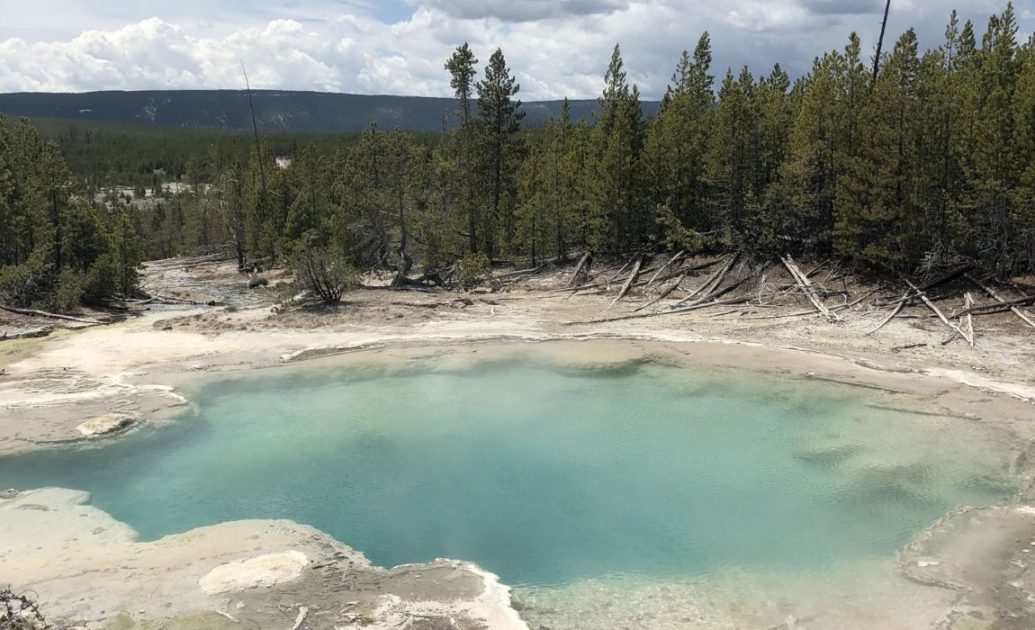
One of the best things about visiting the Mammoth Hot Springs is that they constantly change. As new hot water flows to the surface, the terraces and pools continually evolve, offering a unique experience each time you visit. Whether you’re interested in geology or just looking for a breathtaking natural wonder, the Mammoth Hot Springs are sure to impress.
Hayden Valley – A Natural Wonderland in Yellowstone National Park
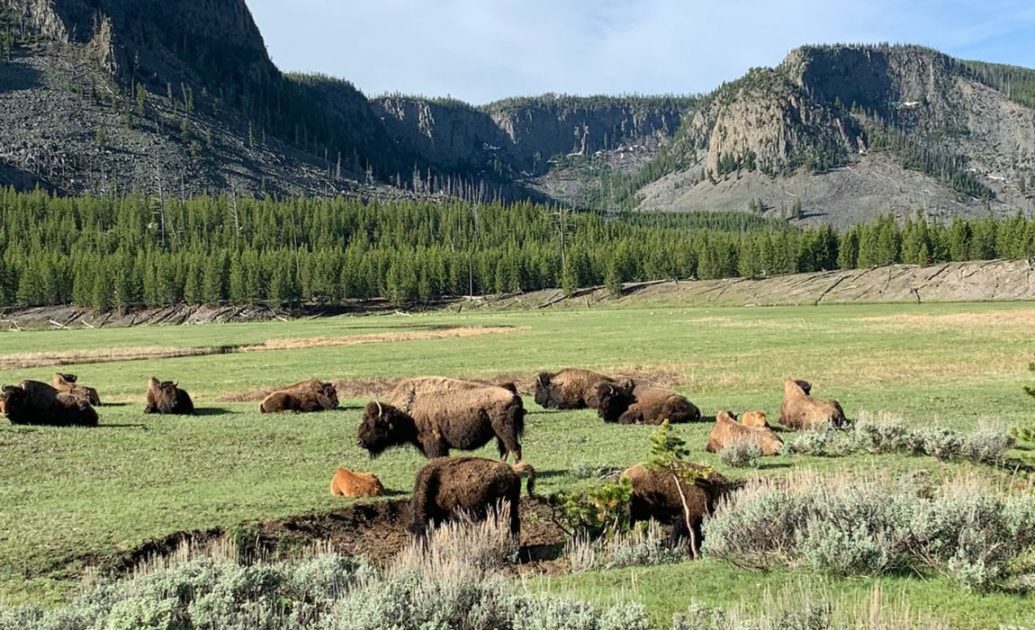
Nestled within the sprawling 2.2 million acres of Yellowstone National Park, Hayden Valley is a breathtakingly beautiful landscape that offers a glimpse into the diverse wildlife and natural wonders of this unique ecosystem. This valley is located in the heart of the park and is one of the best places to witness the park’s abundant wildlife in their natural habitats.
With its rolling hills, scenic meadows, and crystal-clear rivers, Hayden Valley is a prime location for wildlife watching, making it a popular destination for visitors and scientists alike. Visitors can easily spot herds of bison and elk roaming the valley floor, while more elusive species such as wolves, coyotes, and bears are also frequently seen. Whether you’re an avid wildlife enthusiast or simply looking to enjoy the beauty of nature, Hayden Valley is an absolute must-visit for anyone traveling to Yellowstone National Park.
In addition to its incredible wildlife viewing opportunities, Hayden Valley is a haven for outdoor recreation enthusiasts. Whether you’re looking to hike, camp, or fish, there are plenty of opportunities to enjoy the great outdoors in this stunning valley. The valley is also home to the Yellowstone River, which provides some of the best fishing in the park.
Visitors to Hayden Valley can enjoy a range of scenic drives and trails, each offering unique and breathtaking views of the surrounding landscape. Whether you prefer a leisurely stroll or an adventurous hike, there is a trail that is perfect for you. Some of the most popular trails include the Rimrock Drive Trail and the Hayden Valley Trail, both of which offer stunning views of the valley and its wildlife.
Wildlife Viewing in Yellowstone
Yellowstone National Park is known for its stunning scenery and unique geothermal features, but it’s also home to a diverse array of wildlife. From grizzly bears to bison to gray wolves, the park is a great place to experience nature up close and personal.
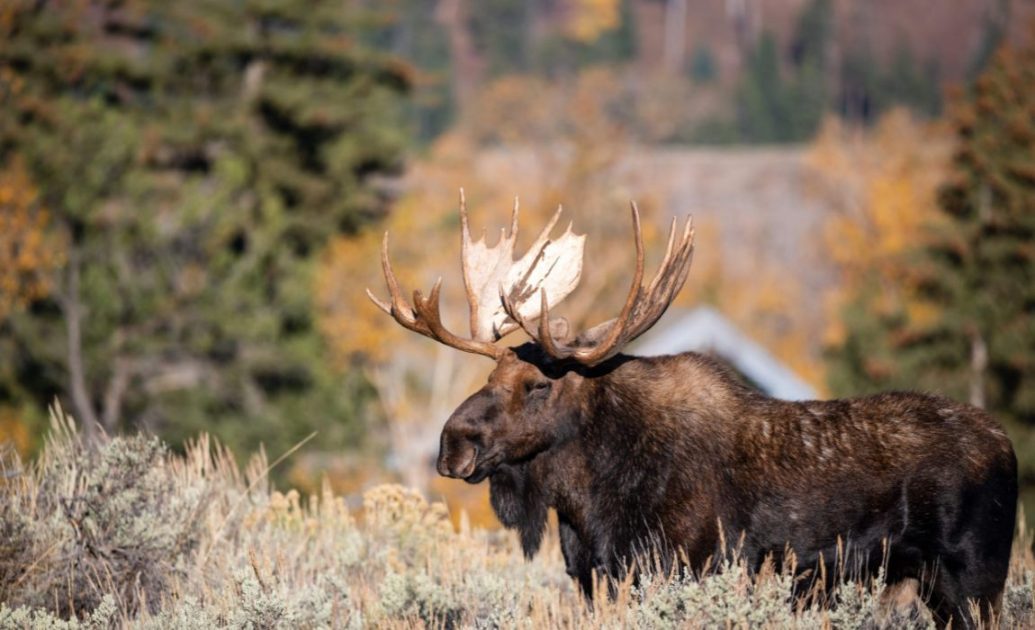
Here are some tips for wildlife viewing in Yellowstone:
Know where to look
Wildlife can be found throughout the park, but certain areas are known for particular species. For example, the Lamar Valley is known for its wolf packs, while Hayden Valley is a great place to spot bison and elk. Be sure to do your research before your trip to know where to go for the best chance of seeing the animals you’re interested in.
Be patient
Wildlife can be unpredictable, so don’t expect to see everything immediately. Take your time and patience, and you might be rewarded with a rare sighting. Remember to keep a safe distance from the animals and never approach them.
Bring binoculars
Even if you can’t get up close to the wildlife, binoculars will help you get a better view from a distance. Many animals are also more active in the early morning or evening, so plan your wildlife viewing accordingly.
Listen for sounds
Sometimes, you might hear an animal before seeing it. Listen for sounds like bison grunts or wolf howls to help you locate them.
Be prepared for the weather
Yellowstone’s weather can be unpredictable, so ensure you’re ready for various conditions. Wear layers, bring rain gear, and pack plenty of water and snacks.
Respect the animals
It’s important to remember that the animals in Yellowstone are wild and should be treated with respect. Keep a safe distance, never approach them, and never feed or touch them.
Some of the most common animals you might see in Yellowstone include bison, elk, deer, coyotes, wolves, bears, and eagles. Remember that the animals are part of a delicate ecosystem, so it’s important to enjoy them responsibly and help preserve their habitat for future generations. With a bit of patience and preparation, Yellowstone’s wildlife viewing opportunities can be a truly unforgettable experience.
Hiking and Outdoor Activities in Yellowstone
With over 2.2 million acres of pristine wilderness, the park offers a vast array of hiking and outdoor activities for visitors to enjoy. Here are some top things to do in Yellowstone for those who love the great outdoors.
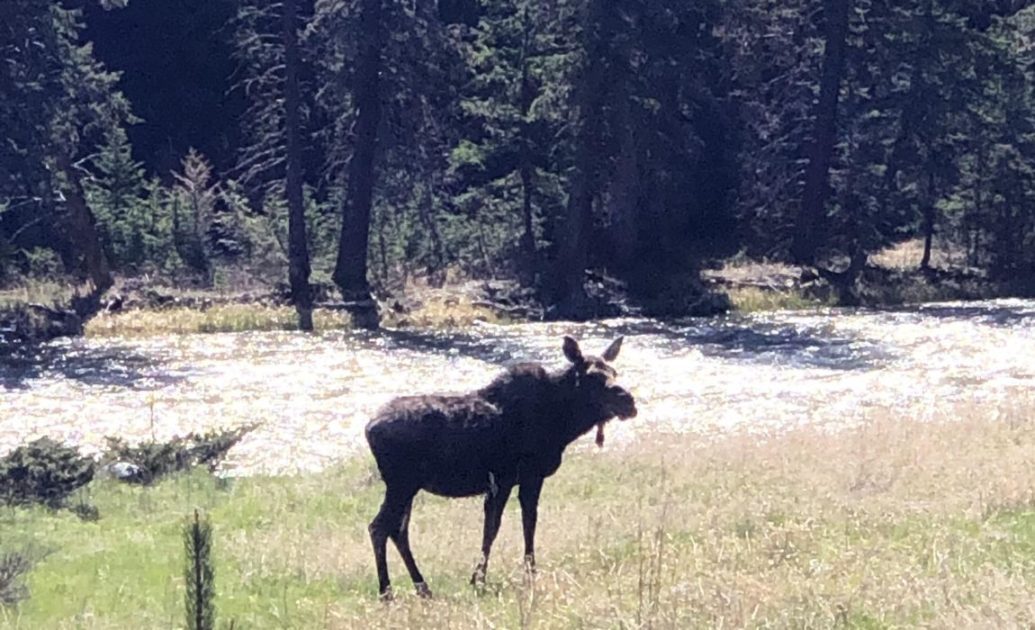
Hiking
Yellowstone has more than 900 miles of hiking trails, ranging from easy strolls to challenging multi-day treks. The park’s backcountry trails provide a unique opportunity to explore the wilderness and encounter wildlife in their natural habitats. Some of the most popular trails include the Grand Canyon of Yellowstone, Mount Washburn, and the Lamar Valley.
Camping
Yellowstone offers a range of camping options for visitors, from primitive campsites to RV parks. The park has 12 campgrounds, with more than 2,000 campsites available on a first-come, first-served basis. For those who prefer a more comfortable camping experience, numerous lodges and cabins are available for rent.
Fishing
Yellowstone is home to some of the best fishing in the world, with more than 1,000 miles of streams and rivers. Visitors can fish for trout, grayling, and other species on their own or with a licensed guide.
Biking
Biking is a popular activity in Yellowstone, with more than 100 miles of designated bike trails. Visitors can bring their bikes or rent them from one of the park’s rental facilities.
Horseback riding
Horseback riding is a unique way to explore Yellowstone’s wilderness, with numerous guided trail rides available. Visitors can choose from various rides, from short scenic jaunts to multi-day backcountry trips.
Wildlife viewing
Yellowstone is home to a vast array of wildlife, including grizzly bears, wolves, bison, elk, and more. Visitors can take guided wildlife tours or explore independently, but it’s important to remember to keep a safe distance from the animals.
Snowshoeing and cross-country skiing
Yellowstone’s winter wonderland is a playground for snowshoers and cross-country skiers. The park offers miles of groomed ski trails and guided snowshoe tours.
With so many outdoor activities to choose from, a trip to Yellowstone National Park is a must for any nature lover. Whether you prefer hiking, camping, fishing, or just taking in the breathtaking views, the park offers something for everyone. Remember to be respectful of the park’s wildlife and natural resources, and leave no trace of your visit.
Tips for a Smooth Trip to yellowstone National Park
How to Navigate the Park
Yellowstone National Park is a vast expanse of wilderness with myriad natural wonders, and it can be overwhelming to navigate.
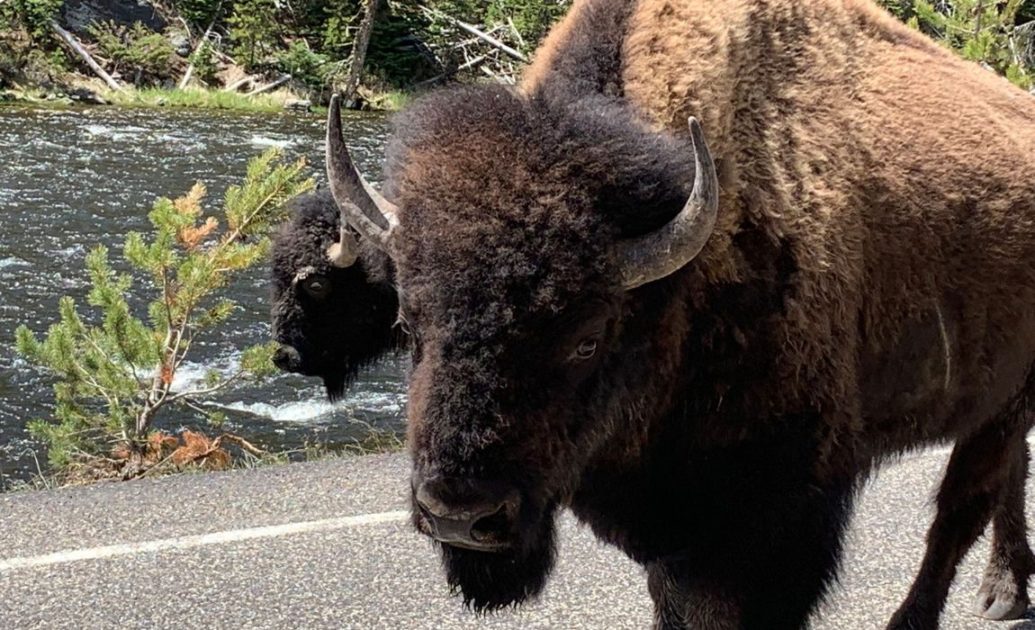
Plan Ahead
Yellowstone National Park is a popular destination, and planning your visit ahead of time is essential. Decide what you want to see and do, and map out your route accordingly. Book your accommodation in advance and avoid peak season if possible. Yellowstone’s peak season is from late June to early September, and the park can get crowded during this time.
Get a Map
Yellowstone National Park covers a vast area, and getting lost or turned around is easy. Get a map of the park at the entrance, or download a map on your smartphone. Familiarize yourself with the different areas of the park, and mark the points of interest you want to visit.
Follow the Rules
Yellowstone National Park has rules and regulations to protect its unique ecosystem. Follow these rules to avoid accidents, fines, or harm to wildlife. Some of the regulations include staying on designated trails, not feeding the animals, and packing out your trash.
Stay Safe
Yellowstone National Park is home to bears, wolves, and bison wildlife. Always maintain a safe distance from the animals and never approach them. Carry bear spray, and make noise when hiking to alert the wildlife of your presence. Dress appropriately for the weather, and stay hydrated.
Take a Guided Tour
Taking a guided tour is an excellent way to explore Yellowstone National Park. Guided tours can provide valuable information about the park’s history, geology, and wildlife. Yellowstone National Park offers a variety of guided tours, including wildlife safaris, geysers, hot springs tours, and photography tours.
Use the Shuttle Service
Yellowstone National Park provides a free shuttle service to different parts of the park. The shuttle service is an eco-friendly and convenient way to explore the park without worrying about parking or getting lost. Check the shuttle schedule and plan your trip accordingly.
Be Flexible
Yellowstone National Park is unpredictable, and weather, wildlife, and road closures can affect your plans. Be flexible with your itinerary and take advantage of unexpected opportunities. The best way to experience Yellowstone is to immerse yourself in its natural wonders and be open to the unexpected.
In conclusion, Yellowstone National Park is a treasure trove of natural wonders and a must-visit destination for nature lovers. Use this guide to navigate the park, stay safe, and make the most of your visit. Plan ahead, follow the rules and be flexible to fully experience the beauty and magic of Yellowstone National Park.
Staying Safe in Yellowstone
Yellowstone National Park is one of the most breathtaking and unique places to visit in the United States. With its geysers, hot springs, and other natural wonders, it is a must-visit destination for any outdoor enthusiast. However, staying safe and prepared for any situation is essential while exploring the park.
Here are some tips for staying safe while visiting Yellowstone:
Follow the park rules and regulations
Yellowstone has rules and regulations that visitors must follow. These rules help protect the park’s natural resources and wildlife and ensure visitor safety. Be sure to read and understand these rules before entering the park.
Be bear aware
Yellowstone is home to grizzly and black bears, so it is important to be bear-aware. This means carrying bear spray, making noise while hiking, and storing food and other scented items properly.
Stay on designated trails
Yellowstone has a variety of trails for visitors to explore, but it is important to stay on designated trails. This helps to protect the park’s fragile ecosystem and wildlife, as well as keep visitors safe.
Check the weather
Yellowstone’s weather can be unpredictable, so it is important to check the forecast before your visit. Be prepared for changing weather conditions and bring appropriate clothing and gear.
Stay hydrated
With the park’s high elevation and dry climate, it is crucial to stay hydrated. Bring plenty of water and drink regularly, especially when hiking or engaging in other outdoor activities.
Watch for signs of altitude sickness
Yellowstone’s high elevation can cause altitude sickness in some visitors. Symptoms can include headaches, nausea, and shortness of breath. If you experience any of these symptoms, take a break and rest until you feel better.
Use caution around hot springs and geysers
Yellowstone is known for its hot springs and geysers, but they can be dangerous. Stay on designated boardwalks and trails, and do not attempt to touch the water.
By following these tips, you can stay safe while enjoying all Yellowstone National Park offers. Remember to always be aware of your surroundings, take appropriate precautions, and enjoy visiting one of the most beautiful places on Earth.
Best Time to Visit for a Crowd-Free Experience
Yellowstone National Park is one of the most popular national parks in the United States, attracting millions of visitors each year. While the park is known for its stunning natural beauty and diverse wildlife, the crowds during peak season can be overwhelming. If you’re looking for a more peaceful and crowd-free experience, here are some tips for the best time to visit Yellowstone National Park.
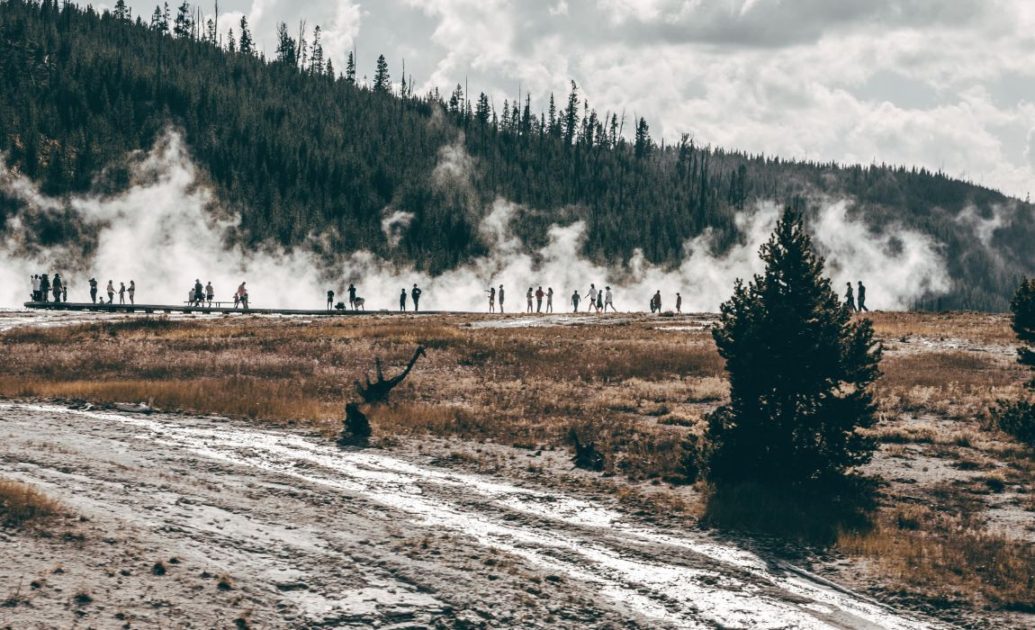
Consider visiting during the shoulder season
The peak season in Yellowstone National Park is the summer months from June to August, with the highest number of visitors. Plan your trip during the shoulder season, from April to May and September to October. During this time, the weather is still pleasant, and the crowds are much smaller, giving you a more relaxed and peaceful experience.
Plan your visit during the week
Most visitors to Yellowstone National Park arrive on the weekends, leading to increased crowds and traffic. If you can, plan your visit during the week when the crowds are lighter and the roads are less congested. This will allow you to take your time exploring the park and enjoy the scenery without feeling rushed.
Visit early in the morning or late in the afternoon
Yellowstone National Park is most crowded during midday when most visitors are out and about exploring the park. If you want to avoid crowds, plan to visit early in the morning or late in the afternoon. This is when the wildlife is most active, and you’ll have a better chance of spotting animals such as grizzly bears, bison, and elk.
Check the park’s website for updates
Yellowstone National Park is vast and unpredictable, so it’s essential to stay updated on road closures, weather conditions, and other important updates. Before your trip, check the park’s website for any updates or closures to plan your visit accordingly.
Book accommodations in advance
During peak season, accommodations in and around Yellowstone National Park can be expensive and hard to find. Book your accommodations in advance to ensure a stress-free and enjoyable trip, and consider staying outside the park to save money.
Wrapping up
In conclusion, Yellowstone National Park is an incredible destination for outdoor enthusiasts, nature lovers, and anyone looking for a unique and unforgettable experience. With its stunning landscapes, diverse wildlife, and endless recreational activities, there’s something for everyone to enjoy.
If you’re interested in wildlife encounters, be sure to check out this guide to unforgettable Yellowstone wildlife encounters. From grizzly bears and wolves to bison and elk, Yellowstone is home to a stunning array of wildlife that’s sure to leave you in awe.
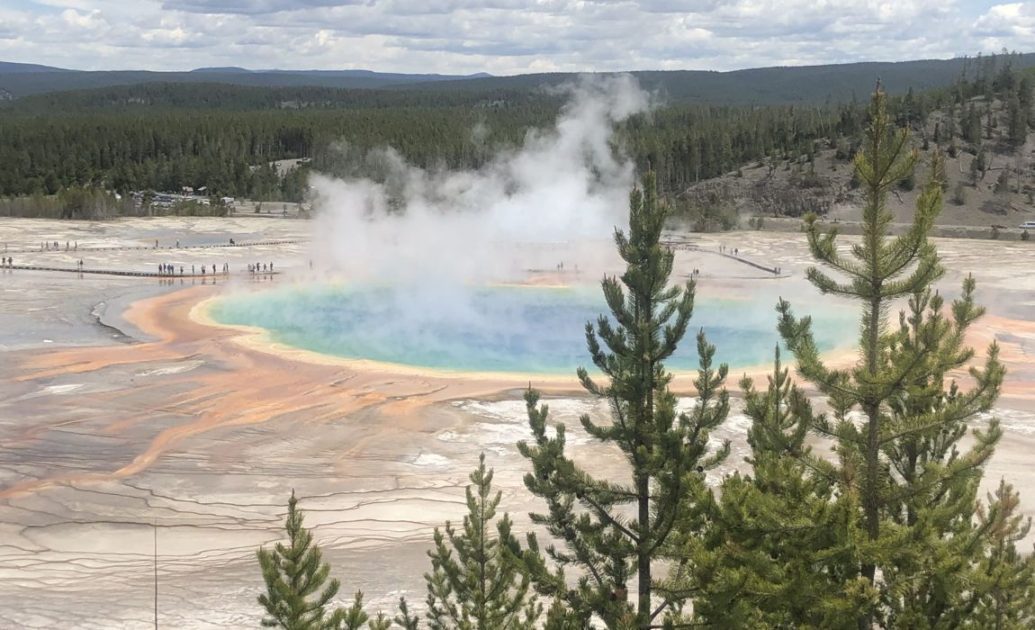
Whether you’re interested in hiking, wildlife viewing, or simply taking in the breathtaking scenery, Yellowstone has it all. Following some simple tips and guidelines, you can stay safe and have a fantastic time exploring all these incredible park offers. So pack your bags, plan your trip, and prepare for an adventure of a lifetime in Yellowstone National Park.
This article may contain affiliate links. I receive a small commission when you purchase products or services through these links at absolutely no extra cost to you. This is a free way to support me and allow me to continue to create inspiring adventure travel guides. See my disclosure notice for more information.
